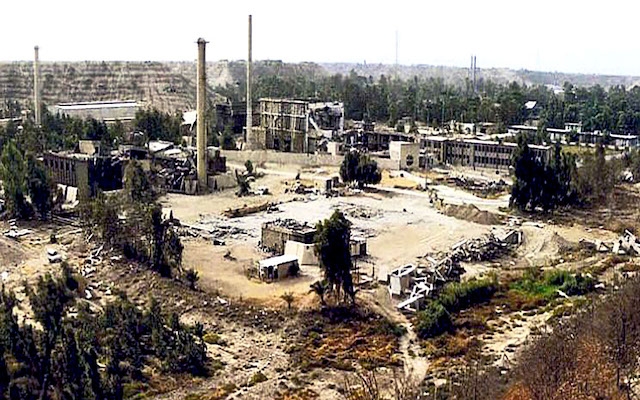On June 7th, 1981, eight Israeli F-16s fighter jets flew a 2,000-mile round trip to bomb Iraq’s Osirak plutonium nuclear reactor at the Tammuz I complex just 10 miles south of Baghdad. The mission, called “Operation Opera”, succeeded at destroying the nearly completed, French-built reactor, which Israel feared would likely be used to develop nuclear weapons that would eventually be headed for Israel.
Ten Iraqi soldiers and one French civilian are killed in the attack. While the Israeli government today has no desire or need to bomb anything in Iraq, this operation that took place over 40 years ago is similar in nature to current Israeli threats to target Iranian nuclear facilities.
Prime Minister Menachem Begin’s approval of the operation established the Begin Doctrine; Israel will do whatever is necessary to prevent a hostile Middle Eastern regime from obtaining nuclear arms. The same doctrine was also applied in 2007 when Israeli warplanes destroyed a Syrian nuclear reactor in Operation Orchard, and the doctrine is behind Israel’s threats to use military action against Iran’s nuclear program.
Israel’s 🇮🇱 Air Force @IAFsite destroyed Saddam Hussein’s nuclear weapons capability in Iraq 🇮🇶 on this day in 1981. As expected, the New York Times @nytimes and United Nations @UN condemned Israel. 400 million people in the Middle East are grateful. pic.twitter.com/AZnKg4FO9Z
— Avi Kaner ابراهيم אבי (@AviKaner) June 7, 2023
While French authorities and some experts refuted that Iraq could have developed weapons with the Osiris-class reactor, which it purchased in 1976 from the French and which Israel learned about in 1977, Israeli intelligence concluded independently that Osirak could have produced atomic bombs of the size used against Hiroshima within less than five years of becoming operational.
Ironically, the American F-16s used in the attack were supposed to be sold to Iran under the rule of the Shah, but the deal was canceled after Iran’s Islamic revolution in early 1979, enabling Israel to purchase the aircraft instead. The Iranian Islamic Republic failed in its own attempt to destroy the reactor in 1980 during its eight-year war against Iraq.
42 years ago today,the #Israeli_airforce destroyed the #osirak nuclear station in Iraq,rendering the biggest imaginable service to the Iranian people.Nukes in Saddam’s hands would have destroyed Iran. Special “thank you” to Israel shall be a priority for a liberated Iran.
— kaveh moussavi (@KavehMoussavi) June 7, 2023
Operation Opera pushed the F-16 fighter bombers to the limit of their fuel and capability range. The fuel tanks were topped off on the runway immediately before takeoff, and pilots maintained a low speed on the way to the nuclear site to conserve fuel. Most of the logistical planning was done by the future first Israeli astronaut, the late Ilan Ramon, who flew the last plane in the formation.
Menachem Begin describes the mission as “literally a lifesaving operation,” and it wins praise from his immediate predecessor as prime minister, Yitzhak Rabin. However, Labor Party leader Shimon Peres disapproves of the operation, which is condemned by the United States, France, and the United Nations.


